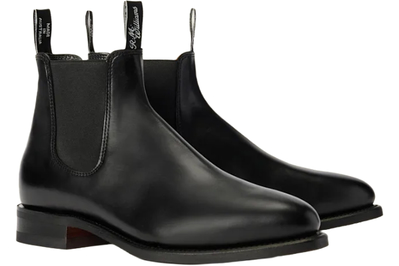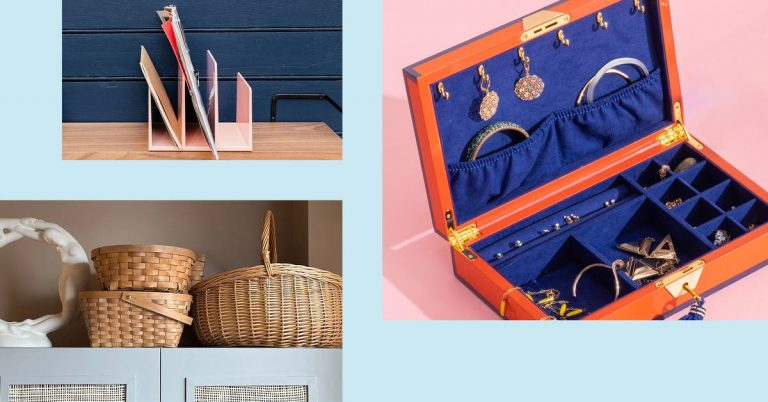These $600 Chelsea Boots Have Lasted Me 12 Years
I bought my first pair of Chelsea boots when I was 16. It was my junior year of high school, and the soundtrack to my life was a chorus of 1960s British Invasion — The Beatles and The Yardbirds, mainly. I barely had any real sense of my personal style, but if I was sure of one thing, it was that all my favorite bands wore really cool black ankle boots.
My second pair came when I was 20, on a trip to Northampton, England — long after the soles of the first had moldered into dust. I had a firmer grasp of my relationship to clothes by then, but I still found the Chelsea to be an elusive piece of footwear that I could never quite figure out how to work into my wardrobe.
Then, on the night before my 23rd birthday, a shoebox arrived by express mail, all the way from Australia. Inside was a pair of black Macquarie boots from R.M. Williams, the century-old maker of the world’s finest Chelseas. This was my third pair of Chelsea boots, and I can still remember holding them in my hands for the first time — light as air, sleek as a stooping raptor — enchanted like Keats standing before the Elgin Marbles. I put them on, and felt as if I’d finally found some lost key to a door I’d first attempted to pass through seven years prior.
I am 35 now, and those same boots are still the first shoes I reach for whether I’m wearing black jeans and a T-shirt or a dark navy suit. Over more than a decade, they have become such an integral part of my wardrobe that last year, I ordered a new, identical pair to wear at my wedding.
Chelsea boots, which first emerged sometime in the mid-19th century, are typically an ankle-height boot with elastic side panels. Chelseas merged the practicality of riding boots with the sharpness of more formal city-wear, which today creates a versatile shoe that can be both formal and casual.
There are literally hundreds of men’s Chelsea boots available on the market, from cheap disposable ones with glued-on soles (like my very first pair), to pairs retailing for thousands of dollars from the best shoemakers in the world.
But R.M. Williams does a number of things to stand out from its counterparts. Most notably, these boots are more durable than any other dress shoe I have worn. My boots have seen torrential rain and light snow, spilled drinks, and all manner of dirt and mud; they have been kicked against cobblestones and never been nicked; and they have gone months of continuous wear without any real leather care. Somehow they always clean up back to their original sheen.

I am convinced that the rubber R.M. Williams uses on its heels and outsoles are of an extraterrestrial material. After 12 years and thousands of miles, I have needed to replace the heel only twice. I typically wear out dress-shoe heels quickly, and any other shoe worn even half as often has required literally eight to 10 heel replacements. And R.M. Williams makes the process of repairing and resoling easy. You can send boots back to the factory for a resole or to replace the elastic (for a fee in the same general ballpark as taking shoes to a high-end local cobbler). The factory can also resize old boots in width and length, in the event that your foot changes sizes over time.
Another feature that sets my R.M. Williams boots apart is the fact that the uppers are made from a single piece of leather. Most Chelsea boots are made from two to four pieces of leather, and, as a result, they have a side seam on both sides, usually right under the elastic. Making shoes from a single piece of leather is harder, more expensive, and more time-consuming — but it allows you to forgo those side seams, creating a much cleaner look.

R.M. Williams boots also undergo a process called “blocking,” where the leather that becomes the top of the shoe is smushed between a set of metal or wooden plates. Aesthetically, this helps create the brand’s iconic, curvy shape, which descends from the opening down to the toe. This sharp, swooping profile flows gracefully towards the hem of suit trousers to form a single, uninterrupted line, which is part of why I love how these boots look with a suit, even though some may say the combination is wholly out of pocket. (But, frankly, who am I, or you, for that matter, to take issue with the style choices of all four Beatles?)
But formal occasions have accounted for only a small fraction of my time in these boots. Most of the time I wear them unceremoniously with jeans and cotton trousers. I love how at home they are with more-casual styles like linen button-ups and olive military pants. They can take a half-slovenly outfit of badly faded black jeans and an old T-shirt and transform it into something full of purpose. Even as my old pair becomes more and more banged up, their former glory still shimmers beneath their years, and even on days when I am wearing a truly plain, nothing outfit, a stranger will often stop to ask me about my boots.
My favorite feature by far is that instead of a firm, leather insole, these boots have a bouncy, Poron insole, which makes them comfortable even on long days and for miles of walking. This nod to comfort is a rare feature in high-end dress shoes, and while R.M. Williams does offer leather-insole shoes, these Poron models are probably its most popular. As someone with a long history of foot injuries, these shoes have gotten me through weeklong destination weddings without discomfort.
The only real issue with these boots is their cost: $619. However, a judicious shopper can still find great deals. In 2013, when the price was still under $500, my final cost was $308 when I purchased directly from a small Australian shop, including shipping to the United States. In 2024 (admittedly pre-tariffs), I purchased the same shoe on sale from a large retailer in Australia for roughly $375, also including shipping (purchasing directly from Australia requires knowing your size, since return shipping across the world can be prohibitively expensive). That is still a lot of money to spend on a single item of clothing, but given that my old pair has lasted 12 years so far, I believe that even their price is worth it.
R.M. Williams has also gone through something of an identity crisis over the last several years. Since 2013, the company has traded hands several times (including a short stint in Hugh Jackman’s hands — his Walk of Fame footprint was made with R.M. shoes), and as of 2024, it has closed all of its US stores (but you can still buy through retailers like Mr. Porter).
All of these changes mean it can be hard to try on shoes and figure out sizing, and returns and repairs can be complicated for US shoppers. Australian sizes are one full size down from US sizes (a 9 US would be an 8 AUS), and these boots come in widths F, G, and H (narrow, regular, and wide or C, D, and EE width equivalents). I find they run true to size, but that may not be everyone’s experience.
What remains consistent, however, is the quality and style of their Chelsea boots. I write this with full confidence, having now spent a great deal of time with pairs purchased in 2013 and in 2024. These are the same quality as the first pair, and hopefully, my next.
Chelseas have gone in and out of style over the years — from the Saint Laurent craze of the 2010s, to the post-pandemic Blundstone saturation era — but for me, they are forever. They have endured two centuries of cyclical popularity with remarkably few changes in that time, in large part because shockingly little can be improved upon in their design. And they’ve endured two decades on my feet. I can look down at my Chelseas and in them see refractions of my 16-year-old self — his hopes, his early and inchoate notions of self, his dreams. I don’t know what exactly he’d think of me today. Tragically, I never was able to become a “Help!”-era Paul McCartney. But at the very least, thanks to R.M. Williams, from my early 20s to my wedding day, I too have had really cool black ankle boots.
This article was edited by Hannah Rimm and Maxine Builder.







